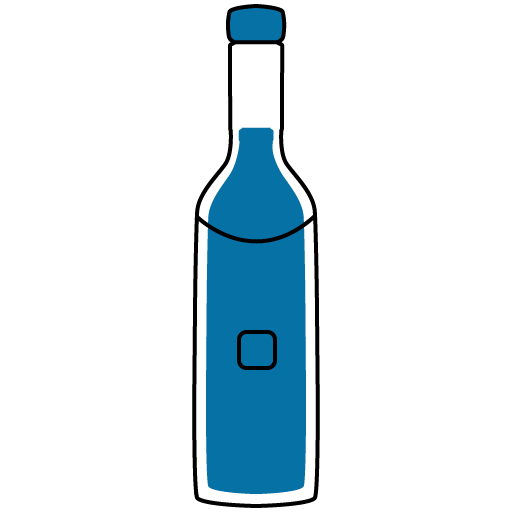
✔ 100% Authentic Product
👁️ Currently Viewing 2419
D-Dopamine Injection
D-Dopamine is used to treat low blood pressure due to various causes like heart attack, infection, or surgery. It improves blood flow and urine output, often used under close medical supervision.
Discount
Price: ৳ 46
MRP:
৳
48
5%
Off

100% Genuine Products, Guaranteed

Safe & Secure Payments, Always

Fast, Secure & Efficient Delivery

Proper Packaging
 Cash on Delivery - All over Bangladesh
Cash on Delivery - All over Bangladesh Regular Delivery - 12-24 Hours, Dhaka City* Charge Tk.39-59
Regular Delivery - 12-24 Hours, Dhaka City* Charge Tk.39-59 Regular Delivery - 24-48 Hours, Other Cities* Charge Tk.99-110
Regular Delivery - 24-48 Hours, Other Cities* Charge Tk.99-110
 ফ্রি ডেলিভারিঃ - ৯৯৯ টাকা+ অর্ডারে, ঢাকা
শহরে
ফ্রি ডেলিভারিঃ - ৯৯৯ টাকা+ অর্ডারে, ঢাকা
শহরে ফ্রি ডেলিভারিঃ - ২৯৯৯ টাকা+ অর্ডারে, ঢাকার
বাহিরে
ফ্রি ডেলিভারিঃ - ২৯৯৯ টাকা+ অর্ডারে, ঢাকার
বাহিরে
100% Genuine Products, Guaranteed
Safe & Secure Payments, Always
Fast, Secure & Efficient Delivery
Proper Packaging
 Cash on Delivery - All over Bangladesh
Cash on Delivery - All over Bangladesh Regular Delivery - 12-24 Hours, Dhaka City* Charge Tk.39-59
Regular Delivery - 12-24 Hours, Dhaka City* Charge Tk.39-59 Regular Delivery - 24-48 Hours, Other Cities* Charge Tk.99-110
Regular Delivery - 24-48 Hours, Other Cities* Charge Tk.99-110 ফ্রি ডেলিভারিঃ - ৯৯৯ টাকা+ অর্ডারে, ঢাকা
শহরে
ফ্রি ডেলিভারিঃ - ৯৯৯ টাকা+ অর্ডারে, ঢাকা
শহরে ফ্রি ডেলিভারিঃ - ২৯৯৯ টাকা+ অর্ডারে, ঢাকার
বাহিরে
ফ্রি ডেলিভারিঃ - ২৯৯৯ টাকা+ অর্ডারে, ঢাকার
বাহিরে
✅ Description:
Brief Description of Dopamine Hydrochloride
- Indication: Shock, acute heart failure, hypotension.
- Adult Dose: 1-5 mcg/kg/min IV for hypotension, with adjustments based on response.
- Child Dose: 1-5 mcg/kg/min IV, titrated up to 20 mcg/kg/min.
- Contraindication: Pheochromocytoma, uncorrected tachyarrhythmias, hypersensitivity.
- Precaution: Correct hypovolemia before infusion, caution in peripheral vascular disease, pregnancy, and lactation.
- Side Effects are Cardiovascular effects, respiratory symptoms, gastrointestinal disturbances, metabolic changes, central nervous system effects, and ocular effects.
- Pregnancy Category: Category C, caution in lactation.
- Interacts with anesthetics, MAO inhibitors, ergots, and alpha-blockers.
Safety Advices

Alcohol
UNSAFE
Consuming alcohol with D-dopamine is unsafe.

Pregnancy
CONSULT YOUR DOCTOR
Use of D-dopamine during pregnancy may pose risks to the developing baby. Consult your doctor to weigh the benefits against potential risks.

Breastfeeding
CONSULT YOUR DOCTOR
Limited data suggests that D-Dopamine is probably safe during breastfeeding. However, consult your doctor before use.

Driving
CAUTION
Do not drive or operate any heavy tools or machines if you experience dizziness or difficulty in seeing bright light after receiving D-Dopamine

Kidney
CONSULT YOUR DOCTOR
Limited information is available on the use of D-dopamine in patients with kidney or liver disease. Consult your doctor for guidance.

Liver
CONSULT YOUR DOCTOR
Limited information is available on the use of D-dopamine in patients with kidney or liver disease. Consult your doctor for guidance.
✔️ Uses of D-Dopamine Injection
- Heart Failure
- Low blood pressure.
✔️ How does D-Dopamine Injection work?
D-Dopamine acts on receptors in various organs, improving blood flow, oxygen delivery, and urine production.
✔️ Side Effects of D-Dopamine Injection
Adverse reactions include ectopic beats, nausea, vomiting, tachycardia, anginal pain, palpitations, dyspnoea, headache, hypotension, hypertension, vasoconstriction, and others.
✔️ Quick Suggestions:
- Administered intravenously by a healthcare professional.
- Regular monitoring of vital signs and organ function is essential.
- Inform your doctor if pregnant, planning pregnancy, or breastfeeding.
✔️ Indications of D-Dopamine Injection
D-Dopamine is recommended for the correction of hemodynamic imbalance present in:
- Acute hypotension or shock is associated with conditions such as myocardial infarction, endotoxic septicemia, trauma, and renal failure.
- As an adjunct after open-heart surgery, where persistent hypotension occurs after correction of hypovolaemia.
- In chronic cardiac decompensation as seen in congestive heart failure.
✔️ Pharmacology
Dopamine is a preparation of Dopamine hydrochloride that stimulates α, β, and dopamine receptors. It is a natural catecholamine formed by the decarboxylation of 3,4-dihydroxyphenylalanine (DOPA). Dopamine produces positive chronotropic and inotropic effects on the myocardium, increasing heart rate and cardiac contractility by exerting an agonist action on β-adrenoceptors and causing the release of norepinephrine from sympathetic nerve endings. Dopamine does not cross the blood-brain barrier and does not activate dopamine receptors in the brain.
✔️ Dosage & Administration of D-Dopamine Injection
Adult dose: Begin infusion at a dosage of 2 to 5 micrograms/kg/min in patients likely to respond to modest increments of heart force and renal perfusion. Increase gradually up to 20 to 50 micrograms/kg/min in seriously ill patients. In patients with severe, refractory, chronic congestive heart failure, doses should be started at 0.5 to 2 micrograms/kg/min and increased as urinary output increases.
Children less than 12 years old: Safety and efficacy have not been established.
Geriatric patients: No variation in dosage is suggested, but close monitoring is required.
- D-Dopamine is administered intravenously through a suitable intravenous catheter or needle.
- Each patient must be titrated individually to the desired hemodynamic and renal response.
- An administration rate greater than 50 micrograms/kg/minute has safely been used in advanced circulatory decompensation states.
- Reduce the rate of administration or temporarily discontinue D-D-Dopamine in case of accidental overdosage.
- Consider using short-acting α-adrenergic blocking agents such as Phentolamine if necessary.
✔️ Reconstitution:
D-dopamine must be diluted before administration to patients using sterile intravenous solutions. Dilutions should be made just before administration.
✔️ Interaction
The action of D-D-Dopamine is potentiated by monoamine oxidase inhibitors (MAOIs). Concurrent administration of cyclopropane or halogenated hydrocarbon anesthetics may cause ventricular arrhythmias. β-adrenergic blocking agents antagonize the cardiac effects of D-D-Dopamine.
✔️ Contraindications
Dopamine hydrochloride is contraindicated in patients with known hypersensitivity to dopamine, phaeochromocytoma, uncorrected tachyarrhythmias, or ventricular fibrillation.
✔️ Pregnancy & Lactation
The drug may be used in pregnant women when the expected benefits outweigh the potential risks to the fetus. Use in breastfeeding mothers is not recommended unless the benefits outweigh the risks.
✔️ Precautions & Warnings
Administer cautiously in patients with impaired renal and hepatic function, and closely monitor blood pressure, urine flow, and tissue perfusion. Correct hypovolaemia before treatment with D-D-Dopamine. Avoid extravasation, and use with caution in patients inhaling cyclopropane or halogenated hydrocarbon anesthetics.
✔️ Storage Conditions:
Store below 25°C and protect from light. Diluted solutions are stable for a minimum of 24 hours when stored as recommended. Avoid mixing with alkaline intravenous solutions or amphotericin B solution.
⚠️Disclaimer:
At ePharma, we’re committed to providing accurate and accessible health information. However, all content is intended for informational purposes only and should not replace medical advice from a qualified physician. Please consult your healthcare provider for personalized guidance. We aim to support, not substitute, the doctor-patient relationship.






